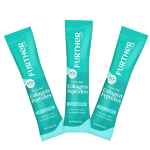I Am Not Invisible, I Have a Chronic Illness

When I was thirteen, my pediatrician referred me to a rheumatologist to investigate why I was so fatigued and why my athletic performance had changed so dramatically after I had noticed in track practice that I had lost my ability to put on the gas at the end of the 200 meters. After my blood tests came out clean, the doctor diagnosed me with fibromyalgia by doing a typical test where different pressure points are pressed to test sensitivity. Without much bedside manner he handed me a prescription slip, told me that I would be on painkillers for the rest of my life, and informed me that I would never play sports again. I wasn’t given any helpful advice about how to manage my symptoms beyond the prescription painkillers— one of which was eventually taken off the market because it was deemed too dangerous.
In a way, I was lucky that I received an accurate diagnosis since most people with fibromyalgia take years to be diagnosed; however, I didn’t want to believe my doctor, and I certainly didn't want to have to give up dancing, sports or performing in musical theatre. I wasn't alone in my skepticism— a large contingent of the Western medical community believes that fibromyalgia is completely psychosomatic, and that symptomatic flares people suffer result solely from high levels of mental or physical stress. Some doctors that I saw after my diagnosis didn’t believe that fibromyalgia even existed. Other times, doctors blamed me for my pain because I refused Western medical treatment. I was consistently shamed for not taking drugs to manage my symptoms-- something I would find especially ironic in later years when I learned of the high concentration of fibromyalgia patients addicted to painkillers.
As it turned out, the skeptics of my disease had a good point; they were just making it the wrong way. After years of living with fibromyalgia and adjusting my lifestyle to manage my symptoms, I do believe that the condition can heal itself. I don't currently have symptoms anymore, which is a far cry from the days that I had trouble believing that I even had a problem, or when I let people convince me that I was responsible for bringing symptoms on myself.
Now that I am symptom free, I’ve had the time and energy to devote myself to other things, though I haven’t strayed far from my disease. Right now, I’m producing a documentary-short about fibromyalgia called Invisible as part of my goal to raise awareness of all “invisible” diseases. Though the number of people who suffer from invisible diseases (which in addition to fibromyalgia includes conditions like Crohn’s, Hashimoto’s, and Multiple Sclerosis) is massive, public knowledge about them is slow and unequally distributed.
Diseases like MS, for example, seem to be universally understood. One of my best friends has MS, and it is consistently amazing to see how many people continue to rally around her and around the Multiple Sclerosis community. Unfortunately, this also makes me realize how little attention is paid to other invisible diseases, like lupus and rare blood disorders. In my own case, I didn't even know that the National Fibromyalgia and Chronic Pain Association existed until earlier this calendar year. Now that I am involved with the organization, I am realizing how much of its bandwidth revolves around legislative issues— we didn’t even manage to have the first national fibromyalgia walk until this past May here in NYC and I found out recently that my home state of Oregon is the most backwards of all states in the US when it comes to legislation regarding fibromyalgia. I have taken on making a positive impact in this area.
I think that a big reason why the awareness of invisible diseases is so low is that each disease gets separated into different not for profit organizations, even though ailments commonly overlap, and many people suffer from more than one of the illnesses. I’ve made it my goal to try to bring the different communities of invisible illnesses together. Our diagnoses may be different, but so many of us suffer from the same problems, and so many of us would benefit from connecting with others. Together, we can work to spread awareness about the fact that someone who looks utterly exhausted might be suffering from more than just too many cocktails from the night before or from a few hours of lost sleep. Our diseases might be invisible, but that shouldn’t mean that we as sufferers are invisible too.
Want to read more?
The Mortifying Way I Discovered my Autoimmune Disease
Easy to Make Meals for Reducing Chronic Pain by a Fitness Star Who Did
Gone Gluten-Free? A Dietitian Reveals 9 Essential Nutrients You May Be Missing
An Open Letter To Anyone Who Asks “How Are You” to Someone with a Chronic Illness
What’s the difference between Celiac Disease, Gluten Intolerance, and Wheat Allergies? A Registered Dietitian Explains
Make Megan's Favorite Our Recipes:
Protein Packed Breakfast Smoothie
No dressing, easy-to-digest arugula salad
Sweet and hot chicken chili
Mushroom Garden Lasagna
Herb and Lemon Roasted Chicken
Note: PLEASE consult with your doctor before making any changes to your diet or medications. The material on this site is provided for educational purposes only, and is not to be used for medical advice, diagnosis or treatment.
























